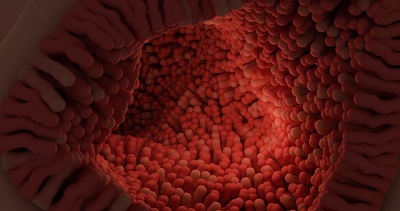Can Pelvic Inflammatory Disease Cause Intestinal Symptoms?
Jennifer, 35 years old, has been experiencing vague lower abdominal pain, along with bloating and diarrhea, for the past few months. Initially, she thought it was just a common gastrointestinal issue and took some over-the-counter stomach medicine, but the symptoms did not improve. After a detailed examination at the hospital, she was eventually diagnosed with pelvic inflammatory disease (PID).

It is not uncommon for people like Jennifer to mistake intestinal symptoms caused by PID for simple intestinal diseases.
So, can PID cause intestinal symptoms?
Pelvic inflammatory disease can indeed cause intestinal symptoms. The female pelvis is adjacent to the intestines, making their positions closely related.
When the inflammation in the pelvis is severe and spreads to the pelvic peritoneum, it can stimulate the nerves and muscles of the intestines, leading to intestinal dysfunction. Patients may experience bloating, abdominal pain, diarrhea, constipation, and other intestinal symptoms.
Moreover, if an abscess forms in the pelvic cavity, especially a larger one, it may compress the intestines. This compression can affect normal intestinal peristalsis and evacuation, causing various intestinal problems. For example, slowed intestinal peristalsis can lead to constipation, while accelerated peristalsis can cause diarrhea.
The specific symptoms are as follows:
1. Abdominal Pain
Abdominal pain caused by PID usually occurs in the lower abdomen or pelvic region and can be continuous or intermittent. This pain differs from that caused by primary intestinal diseases, as it is often related to the onset and exacerbation of PID.
During menstruation or after sexual intercourse, the pain may become more noticeable. It can be a dull ache, sharp pain, or stabbing pain, sometimes accompanied by a heaviness. The pain can become severe if the inflammation involves the peritoneum, and rebound tenderness may occur.
2. Diarrhea
Due to inflammation stimulating the intestines, accelerated peristalsis may lead to diarrhea. Generally, this diarrhea is not as severe as that caused by intestinal infections and usually does not result in a large volume of watery stools or pus-blood stools.
3. Constipation
Inflammation leading to pelvic adhesions or abscesses compressing the intestines may slow down intestinal peristalsis, resulting in constipation. Patients may experience difficulty in bowel movements and hard stools and may even need to use laxatives to relieve constipation.
How to Treat Intestinal Symptoms Caused by Pelvic Inflammatory Disease?
1. Antibiotic Treatment
Pathogen detection and drug sensitivity tests are usually conducted before administering medication to select the most effective antibiotics. Commonly used antibiotics include cephalosporins, metronidazole, levofloxacin, etc. The course of treatment generally needs to be long enough, usually 10-14 days, to ensure the complete elimination of pathogens and prevent the recurrence of inflammation.
If the condition is severe or the patient does not respond well to antibiotics, the herbal medicine Fuyan Pill can be used as a treatment.
2. Symptomatic Treatment
For intestinal symptoms, antispasmodic and analgesic drugs can relieve the spasm of intestinal smooth muscles and alleviate pain. Antidiarrheal medications can be used for diarrhea, and laxatives such as glycerin suppositories or lactulose can be used for constipation.
However, it is important to note that these medications only provide symptomatic relief and cannot replace the fundamental treatment of pelvic inflammatory disease.
3. Physical Therapy
Methods such as hot compresses, infrared radiation, and ultrashort waves can help promote pelvic blood circulation, accelerating the absorption and resolution of inflammation. These physical therapy methods are usually adjunctive and can be performed alongside antibiotic treatment.
4. Surgical Treatment
If a pelvic abscess forms and, after 48-72 hours of medication treatment, the fever persists, symptoms worsen, or the abscess enlarges and is unresponsive to medication, surgical incision, and drainage may be necessary.
Surgical options include abdominal surgery or laparoscopic surgery, with a specific choice depending on the patient's condition and overall health status.
When women experience lower abdominal pain and intestinal discomfort, they should seek medical attention promptly for relevant examinations to confirm the diagnosis and take appropriate treatment measures to avoid delaying the condition.
Additionally, in daily life, women should pay attention to personal hygiene, maintain good living habits, and prevent pelvic inflammatory disease.
You may also be interested in:
What is The Most Obvious Pain Location in Pelvic Inflammatory Disease?
What is The Most Obvious Pain Location in Pelvic Inflammatory Disease?
previous pageCan Abnormal Vaginal Discharge Cause Pelvic Inflammatory Disease?
next page- Daily Care Tips for Pelvic Inflammatory Disease Caused by Ureaplasma Urealyticum
- Treatment of PID
- Why Does Pelvic Inflammatory Disease Cause Fatigue? Don't Ignore These 5 Symptoms!
- Can Abnormal Vaginal Discharge Cause Pelvic Inflammatory Disease?
- Can Pelvic Inflammatory Disease Cause Intestinal Symptoms?
Testimonials
- Adenomyosis with Ureaplasma Urealyticum Cured by Fuyan Pill
- Tubal blockage with hydrosalpinx can be cured by TCM shortly
- Fuyan Pill Helps A woman with Adenomyosis Get Pregnant
- A Woman with Hydrosalpinx Is Cured with Fuyan pill
- Pelvic Inflammatory Disease Testimonials
- Irregular Vaginal Bleeding and Endometrial Thickening Cured by Fuyan Pill
- Pruritus Vulvae and Frequent Urination: Mycoplasma Infection Cured after 2 Courses



